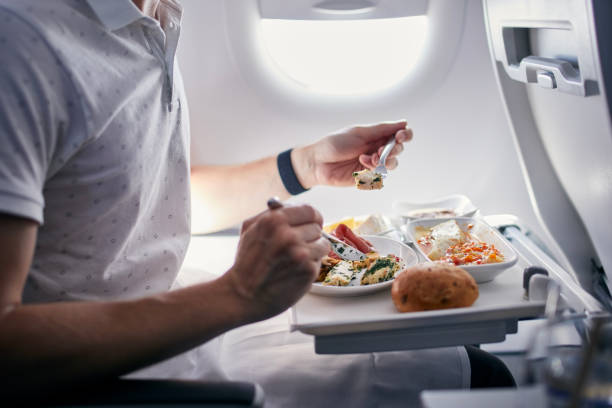Exploring the World of Culinary Aviation
The fusion of gourmet dining and air travel has given rise to a unique niche in the aviation industry: culinary aviation. This innovative concept goes beyond traditional in-flight meals, offering passengers an elevated gastronomic experience at 30,000 feet. From collaborations with Michelin-starred chefs to specially designed menus that combat the effects of high-altitude dining, culinary aviation is transforming the way we perceive and enjoy food during air travel.

Challenges of High-Altitude Gastronomy
Crafting delectable meals for consumption at high altitudes presents unique challenges. At cruising altitude, the low air pressure and dry cabin atmosphere affect our taste buds and olfactory senses. Foods can taste bland, and aromas are less pronounced. This phenomenon has led airlines to collaborate with food scientists and chefs to develop dishes that maintain their flavor profile at high altitudes.
Collaboration with Celebrity Chefs
Many airlines have partnered with renowned chefs to elevate their in-flight dining experience. These collaborations bring Michelin-starred expertise to airline kitchens, resulting in menus that rival those of high-end restaurants on the ground. Chefs like Joël Robuchon, Gordon Ramsay, and Heston Blumenthal have all lent their culinary prowess to various airlines, creating signature dishes that redefine airplane food.
Innovative Menu Design and Preparation
Culinary aviation involves more than just tasty recipes. Airlines are investing in advanced food preparation and storage techniques to ensure that meals retain their quality during flight. Some carriers have introduced on-board chefs who finish and plate dishes mid-flight, providing passengers with a fresh, restaurant-like experience. Others have implemented sous-vide cooking methods, which help preserve flavors and textures during reheating.
Focus on Local and Seasonal Ingredients
To enhance the travel experience, many airlines are incorporating local and seasonal ingredients into their menus. This approach not only supports sustainability efforts but also offers passengers a taste of their destination before they even land. For example, flights to Japan might feature regional specialties like Wagyu beef or fresh sushi, while routes to Italy could showcase handmade pasta and local cheeses.
Wine and Beverage Programs
Complementing the focus on gourmet meals, airlines are also enhancing their beverage offerings. Sommeliers are being brought on board to curate wine lists that pair well with the menu and perform optimally at altitude. Some carriers have even introduced in-flight mixology programs, offering craft cocktails designed specifically for consumption in the air.
Sky-High Culinary Insights
• Taste buds are about 30% less sensitive at high altitudes, requiring stronger flavors in airline food
• Some airlines use special pressurized ovens to cook food mid-flight, ensuring optimal texture and taste
• Umami-rich foods like tomatoes and mushrooms perform well at altitude due to their flavor-enhancing properties
• Certain airlines offer pre-flight meal selection, allowing passengers to customize their dining experience
• In-flight meals are typically prepared 10 hours or less before departure to ensure freshness
The Future of Dining in the Skies
As airlines continue to innovate in the realm of culinary aviation, passengers can expect even more sophisticated and personalized dining experiences. From individual meal customization based on nutritional needs to virtual reality-enhanced dining environments, the future of in-flight gastronomy promises to be as exciting as the destinations we fly to. Culinary aviation not only satisfies our appetites but also adds a new dimension to the journey, making the act of getting there just as enjoyable as arriving.





